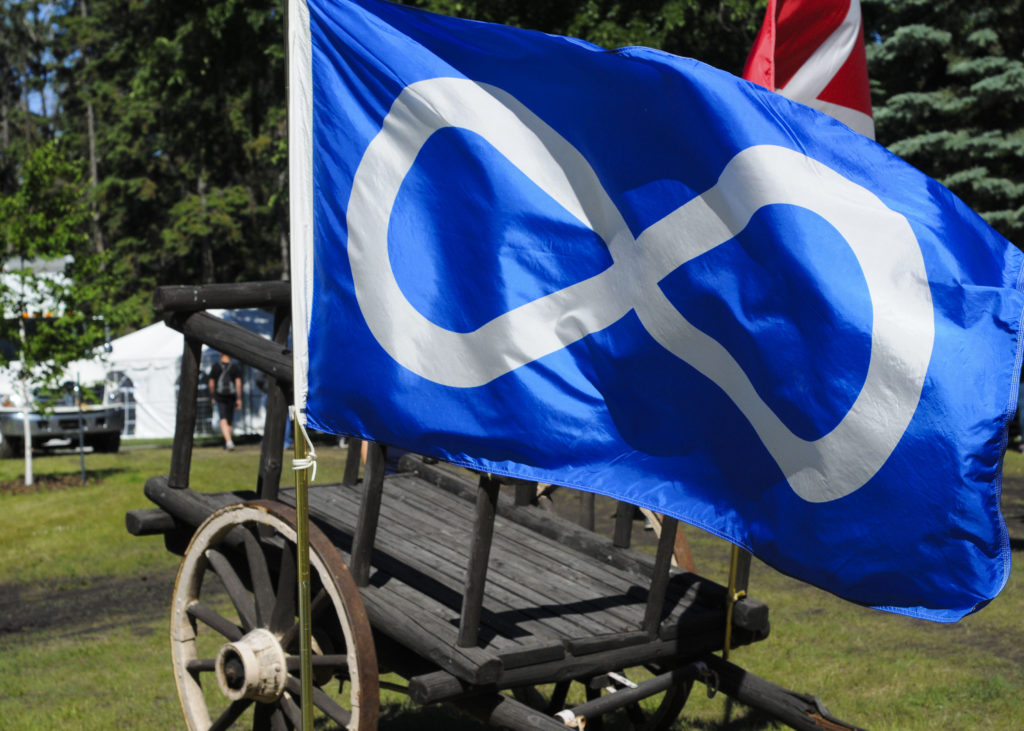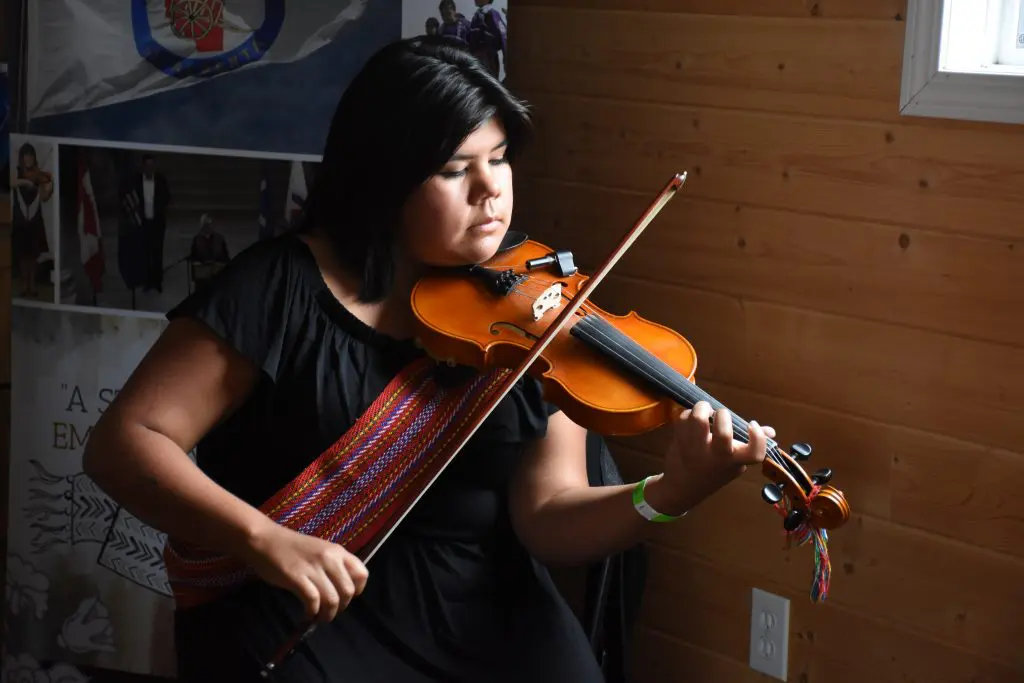Métis Sash
The Métis sash is a colourful finger-woven belt that is usually three-meters long. It is sometimes referred to as L’Assomption sash or Ceinture Fléchée (arrow sash).
The sash was used by the Voyageurs of the fur trade and was quickly adopted by their Métis sons. They used the sash as a belt to hold coats closed, and also as a towrope, tumpline, towel, and even a sewing kit.
The Métis sash became the most recognizable part of the Métis dress and a symbol of the Métis people. Today, the sash continues to be an integral part of Métis culture and heritage. Learn more.
Red River Cart
According to the journal of North West Company fur-trader Alexander Henry (the younger), the carts made their first appearance in 1801 at Fort Pembina, just south of what is now the United States border.
Originally, small horse-drawn carts had three-foot solid wheels cut from large trees and carried up to 450 pounds. Later, larger wheels with four spokes were used, and gradually the red river carts with their huge spoke wheels evolved, carrying nearly twice as much. Sometimes, wheels were wrapped in shaganappi (green rawhide).
Each wheel was said to have its own shriek, announcing the coming of a traveller from a great distance (grease or oil would have only mixed with the dust and wore down the axles). Learn more.
Red River Jig
The Red River jig is the most popular Métis dance.
It is a very structured competition dance between two partners. The dance involved hardly any movement of the body above the knees, and all the work was done with the feet. Furniture used to be moved aside and cleared out in order to make room for jigging contests at gatherings. Other popular dances include the Duck Dance, The Reel of Four, and Drops of Brandy, but none was more favoured than the Red River Jig. Learn more.

Métis Flag
The flag of the Métis is the oldest Canadian patriotic flag indigenous to Canada, pre-dating the Canadian flag by over 150 years. It was presented by Alexander MacDonnell of the North West Company and was first used in 1815.
Cuthbert Grant later flew the flag in 1816 during la Victoire de la Genouillère—a battle marking the boiling point of years of conflict between the North West Company and the Hudson’s Bay Company. La Victoire de la Genouillère was one of the first times the Métis asserted themselves as a distinct nation of people with rights to trade and travel freely on their own land.
The flag symbolizes the creation of a new society, and the infinity symbol suggests that Métis people will exist forever. Learn more.
Traditional Cuisine
Many Canadians believe Métis traditional food is limited to bison, pemmican, and bannock. This is not the case. Métis culinary skills are creative, and there is a lot of variety in Métis dishes.
Celebrations especially feature a diverse spread of delicious food. Gathering to share food brings the community together. Whether canning, drying meats and fish, or using fresh ingredients food preparation is a special part of Métis family life and a time of bonding. Learn more.
Métis Beadwork
The Métis are known as the “flower beadwork people” for their distinct style of beading.
Once made available through trade, beading had become a signature medium of artistry and decoration by Métis woman. Métis beadwork has decorated clothing, personal items, and more, worn by both men and women.
Known for their floral embroidery, some designs are linked to Métis families as far back as the 1800s. Learn more.
Métis Fiddle
Métis fiddling style was developed in Western Canada and incorporated many Indigenous rhythms, but was heavily influenced by music brought from the European fur traders.
The Métis are well known for their ability to fiddle an exciting tune with a quick beat. The fiddle is played with a bounce in the sound, which is not common to hear in any other style of music. This style of playing makes the music less choppy and regimented, and very easy to dance to. Learn more.
Get your hands on “free Métis Fiddle Music with the Métis Fiddling for Dancing album by Alex Kusturok, Donny L’Hirondelle, and Garry Pruden.





